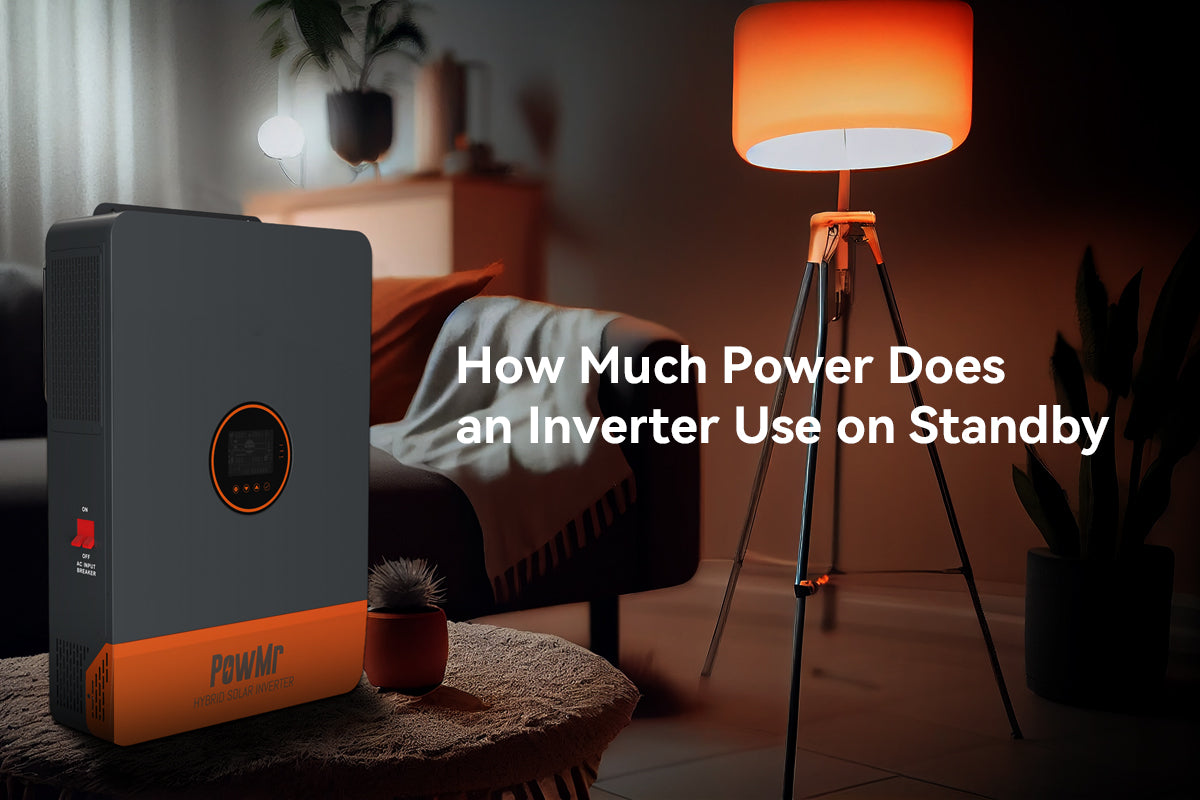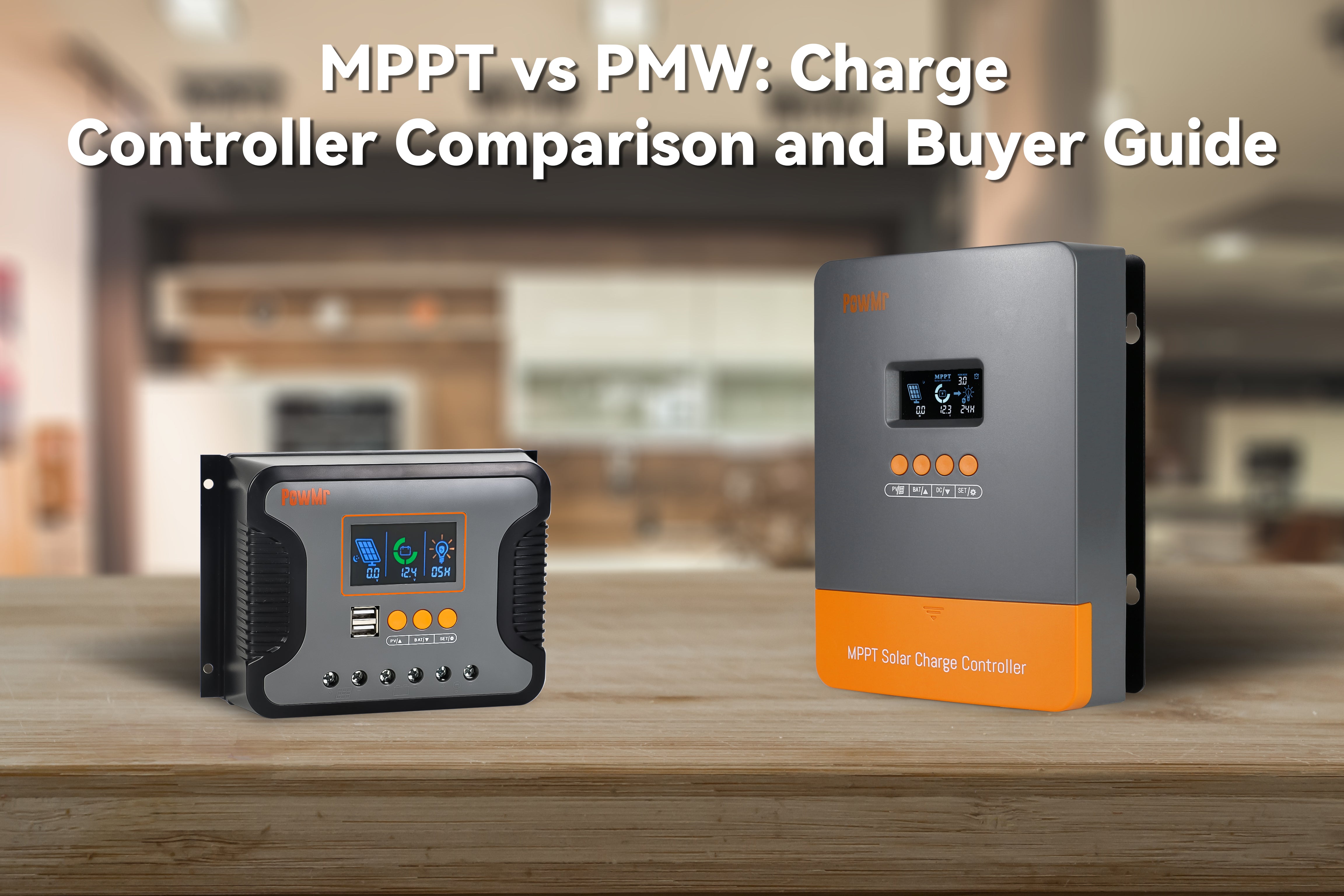Worried that all the power generated by the solar panels and stored in the batteries will be depleted by the inverter, even though it is not connected to the load, to the point where you can't use your appliances properly during a power outage?
Keep reading, we will expain what is inverter standby mode, how much power does an inverter consume without load and how to reduce the electricity depletion.
What is no load current draw of inverter?
The no-load current draw of an inverter is the amount of current that the inverter consumes when it is connected to a power source but there is no load (i.e., no device or appliance) connected to it.
This current draw is usually very small, typically measured in milliamperes (mA) or microamperes (μA), and it is mainly used to power the inverter's internal control circuitry, such as the oscillator and the voltage regulation circuit.
It's important to note that even though the no-load current draw is small, it still represents a power loss that can add up over time if the inverter is left connected to a power source without any load. Therefore, it's generally recommended to turn off or disconnect the inverter when it's not in use to minimize energy waste.
How many amps does an inverter draw
The amount of power drawn from a battery by an inverter, even when there is no load attached, is called the "idle" or "no-load" consumption of the inverter.
The average draw from the batteries when an inverter is turned on with no load attached depends on the efficiency of the inverter and its standby power consumption. In general, the standby power consumption of most inverters is relatively low, typically less than 1% of their rated power output.
For a 1000W inverter, the average idle power consumption could be around 10-20 watts, while for a 2000W inverter, it could be around 20-40 watts. However, the exact amount can vary depending on the specific inverter model and its efficiency.
To calculate the amount of time it takes for the battery to be depleted, we need to know the capacity of the battery (in amp-hours) and the voltage of the battery. For example, if you have a 100Ah battery with a nominal voltage of 12V, its capacity would be:
Capacity = 100Ah x 12V = 1200Wh
If we assume the inverter has an idle power consumption of 20W and is connected to this battery, the time it takes for the battery to be depleted would be:
Time = Capacity / Power = 1200Wh / 20W = 60 hours
Therefore, if you have a 100Ah battery with a nominal voltage of 12V, and a 1000W inverter connected to it, it would take around 60 hours for the battery to be depleted due to idle power consumption. Similarly, if you have a 2000W inverter connected to the same battery, it would take around 30 hours for the battery to be depleted due to idle power consumption.
Advice To Users On Reducing Standby Power Consumption
Choose an inverter with standby mode
Standby mode in a solar inverter can reduce its power consumption when there is no solar energy being produced or consumed.
What is standby mode of inverter
Standby mode in a solar inverter can reduce its power consumption when there is no solar energy being produced or consumed.
The inverter with standby mode can monitor the solar panel system for any changes in energy production, but it uses a minimal amount of power to do so. This mode is designed to help conserve energy and extend the life of the inverter, while also ensuring that it is ready to start producing energy when needed.
When the solar panels start producing energy again, the inverter will automatically switch back to its normal operating mode and begin converting the DC power produced by the solar panels into usable AC power for the home or business.
Choose an inverter with power-saving mode
Some inverters, such as PowMr Sunsmart 10K have power-saving mode can help reduce idle consumption by 5-10W. Users can set the saving mode when there is no large load connected to the system.

What is power saving mode
Power-saving mode is a feature in some solar inverters that allows them to reduce their power output when the demand for electricity is low. In this mode, the inverter can reduce its power consumption and increase efficiency, which can save energy and reduce operating costs.
Note:
Power-saving mode and standby mode are not the same in a solar inverter.
Standby mode is a state where the inverter is powered on but not actively producing any electricity. This mode is often used when there is no power demand from the connected load, and the inverter waits for a signal to start producing power.
On the other hand, the saving mode of a solar inverter is a feature that allows the inverter to optimize the energy production of the solar panels. In this mode, the inverter adjusts the power output of the solar panels to match the current energy demand of the home or building, reducing the amount of excess energy that is sent back to the grid. This can help to maximize the self-consumption of solar energy and reduce electricity bills.
While both power-saving mode and standby mode can help reduce energy consumption, they operate differently and serve different purposes in a solar inverter.
Invest in a high-quality sine wave inverter
The higher the quality of the inverter, the lower the no-load consumption. So, it's recommended to choose a sine wave inverter as the first choice to reduce standby power consumption.
Buy a remote controller for the inverter
If the power system is far from the living area and turning the inverter on/off is necessary, a remote controller is recommended. Standby consumption of inverters can be quite high, leading to battery discharge. Using a remote controller makes it easier to control the inverter on/off and save battery power.
Unplug the inverter when it is not in use
The simplest and most effective way to reduce standby power consumption is to tunrn off the inverters when they are not in use. Even if a device is turned off, it can still consume standby power if it is plugged in.
FAQ - Does Inverter Consume Electricity when Fully Charged
When an inverter is fully charged, it means that the battery or power source that it is connected to has reached its maximum capacity, and the inverter is no longer charging the battery. At this point, the inverter will not consume electricity as long as it is not powering any devices or appliances, but no-load consumption still exists.




Leave a comment
This site is protected by reCAPTCHA and the Google Privacy Policy and Terms of Service apply.